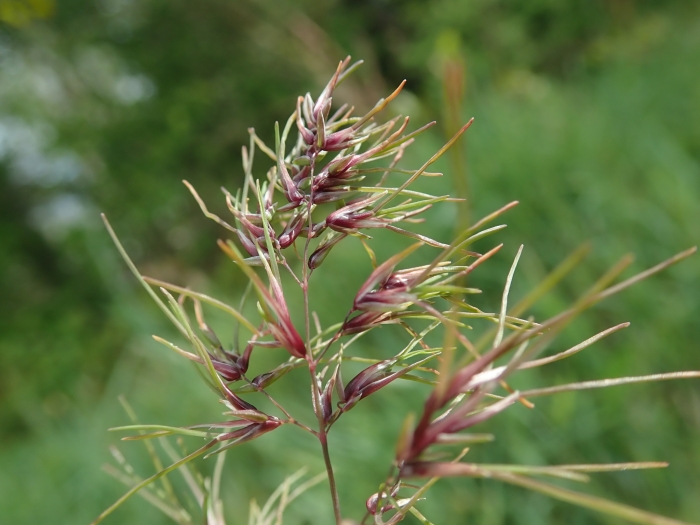Bulbous Bluegrass
(Poa bulbosa)
Bulbous Bluegrass (Poa bulbosa)
/
/

Randal
Public Domain
Image By:
Randal
Recorded By:
Copyright:
Public Domain
Copyright Notice:
Photo by: Randal | License Type: Public Domain | License URL: http://creativecommons.org/publicdomain/zero/1.0/ | Rights Holder: Randal | Publisher: iNaturalist | Date Created: 2021-04-26T09:53:56-07:00 |










































Estimated Native Range
Summary
Poa bulbosa, commonly known as Bulbous Bluegrass, is an evergreen perennial grass native to a range of habitats including grasslands, open woodlands, and rocky outcrops from Europe to Northwest China, Macaronesia to the Himalayas, and North Africa. It reaches a height of 1-2 feet and a width of 0.3-0.5 feet. The grass is characterized by its bulbous base, which stores water, allowing it to thrive in dry conditions. Its inflorescence is a wide cluster of branches with green, leaf-like spikelets that have darker bases containing bulbils. Bulbous Bluegrass is known for its ability to reproduce asexually through its basal bulbous sections and via bulbils, as it rarely produces viable seeds.
Bulbous Bluegrass is valued for its hardiness and persistence, making it a suitable choice for erosion control and as a ground cover in dry, disturbed areas. However, its aggressive nature means it can easily become dominant, outcompeting native species and potentially becoming invasive. In cultivation, it prefers full sun to part shade and can tolerate a range of soil moisture levels and drainage types. It is important to note that the bulbous sections can be detached and replanted to propagate new plants. Gardeners should be cautious when introducing this species outside its native range due to its invasive potential.CC BY-SA 4.0
Bulbous Bluegrass is valued for its hardiness and persistence, making it a suitable choice for erosion control and as a ground cover in dry, disturbed areas. However, its aggressive nature means it can easily become dominant, outcompeting native species and potentially becoming invasive. In cultivation, it prefers full sun to part shade and can tolerate a range of soil moisture levels and drainage types. It is important to note that the bulbous sections can be detached and replanted to propagate new plants. Gardeners should be cautious when introducing this species outside its native range due to its invasive potential.CC BY-SA 4.0
Plant Description
- Plant Type: Grass
- Height: 1-2 feet
- Width: 0.3-0.5 feet
- Growth Rate: Moderate
- Flower Color: N/A
- Flowering Season: Spring
- Leaf Retention: Evergreen
Growth Requirements
- Sun: Full Sun, Part Shade
- Water: Medium, Low
- Drainage: Slow, Medium, Fast
Common Uses
Butterfly Garden, Low Maintenance
Natural Habitat
native to a range of habitats including grasslands, open woodlands, and rocky outcrops from Europe to Northwest China, Macaronesia to the Himalayas, and North Africa
Other Names
Common Names: Alpine Bluegrass, Bulbous Meadow Grass, Bulbous Poa, Bulbous Meadowgrass, Bulbous Speargrass, Bulbous Meadow-Grass, Gweunwellt Oddfog, Løg-Rapgræs, Knolliges Rispengras, Grama Cebollera
Scientific Names: , Poa bulbosa, Poa bulbosa subsp. vivipara, Poa bulbosa var. vivipara, Poa bulbosa f. vivipara, Poa iconia, Poa crispa, Poa eigii, Poa pelasgis, Poa bulbosa subsp. pseudoconcinna
GBIF Accepted Name: Poa bulbosa L.